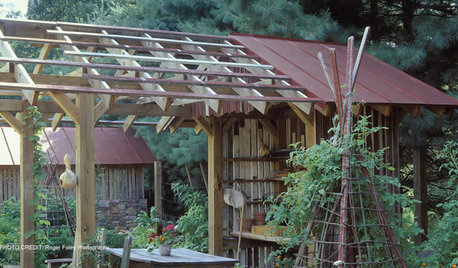Is there one kind of scale?
Tiffany, purpleinopp Z8b Opp, AL
11 years ago
Related Stories

KITCHEN DESIGNKitchen Recipes: Secret Ingredients of 5 One-of-a-Kind Cooking Spaces
Learn what went into these cooks’ kitchens — and what comes out of them
Full Story
MORE ROOMSOne-of-a-Kind Decor for Above the Bed
That Headboard Wall: It's the Perfect Spot for an Accent All Your Own
Full Story
FARM YOUR YARDHouzz Call: Show Us Your One-of-a-Kind Chicken Coops
Do you have a fun or stylish backyard shelter for your feathered friends? Post your pictures and stories in the Comments!
Full Story
GARDENING AND LANDSCAPINGOne-of-a-Kind Ways With Planters
Bright colors, unusual shapes, unexpected uses ... these unique ideas for container plantings with personality may just grow on you
Full Story
GARDENING GUIDESWhat Kind of Roses Should You Grow?
Want to add the beauty of roses to your garden? Find out which ones, from old-fashioned to modern, are right for you
Full Story
HOUZZ TVHouzz TV: Love and Geometry in an Inspired One-of-a-Kind House
Architect Bart Prince designed the inventive sculptural addition for this Los Altos, California, home
Full Story
PETSWorld of Design: Pampered Pets and Their 10 One-of-a-Kind Homes
Fall in love with these critters and their clever living spaces, from a cat playground in France to a chicken house in the U.S.
Full Story
CONTEMPORARY HOMESHouzz Tour: A Contemporary Home With One-of-a-Kind Features
Salvaged doors, accent walls and dashes of bright color make for unexpected touches inside
Full Story
GARDENING AND LANDSCAPING12 One-of-a-Kind Trellis and Arbor Designs
Create Your Own Place for Vines, Flowers or a Romantic Chandelier
Full Story
SHOP HOUZZShop Houzz: One of a Kind
Decorate with unique vintage and consigned furnishings and decor
Full Story0
More Discussions








tapla (mid-Michigan, USDA z5b-6a)
Tiffany, purpleinopp Z8b Opp, ALOriginal Author
Related Professionals
Derry Landscape Architects & Landscape Designers · Azalea Park Landscape Contractors · Bowie Landscape Contractors · Dunwoody Landscape Contractors · Fishers Landscape Contractors · North Richland Hills Landscape Contractors · Pahrump Landscape Contractors · Santa Ana Landscape Contractors · Vermilion Landscape Contractors · Whittier Landscape Contractors · Wilton Landscape Contractors · Fountain Hills Interior Designers & Decorators · Linton Hall Interior Designers & Decorators · Whitman Interior Designers & Decorators · Springdale Handymanrhizo_1 (North AL) zone 7
Tiffany, purpleinopp Z8b Opp, ALOriginal Author
Tiffany, purpleinopp Z8b Opp, ALOriginal Author
Tiffany, purpleinopp Z8b Opp, ALOriginal Author
rhizo_1 (North AL) zone 7
tapla (mid-Michigan, USDA z5b-6a)
elkay_gw
Tiffany, purpleinopp Z8b Opp, ALOriginal Author
rhizo_1 (North AL) zone 7
silentsurfer
Tiffany, purpleinopp Z8b Opp, ALOriginal Author
silentsurfer
tapla (mid-Michigan, USDA z5b-6a)
Tiffany, purpleinopp Z8b Opp, ALOriginal Author
birdsnblooms
Tiffany, purpleinopp Z8b Opp, ALOriginal Author
birdsnblooms
flora_uk
Tiffany, purpleinopp Z8b Opp, ALOriginal Author
birdsnblooms
Tiffany, purpleinopp Z8b Opp, ALOriginal Author